
In recent years, having goals such as net-zero carbon emissions and renewable energy in mind, countries around the world have seen the development of electric vehicles and energy transformation as major policy emphases, and set a timeline to put a ban on new gas cars. However, the performance of traditional silicon power semiconductors has reached its limits under the growing high-power demands in the electric vehicle industry. As emerging compound semiconductors, namely silicon carbide (SiC) and gallium nitride (GaN) that have notable resistance against high temperature and high voltage, have become important strategic materials, quality and reliability in turn evolves into key factors in enhancing competitiveness. On March 9, the Industrial Development Bureau of the Ministry of Economic Affairs and EETimes jointly held the "International Industry Forum on Technologies and Future Applications Trend of Wide Bandgap Components" at the Hua Nan Bank International Convention Center. DEKRA iST was invited to share "Comprehensive Validation Solution of WBG Power Components in EV System," which drew a packed audience and received critical acclaims.
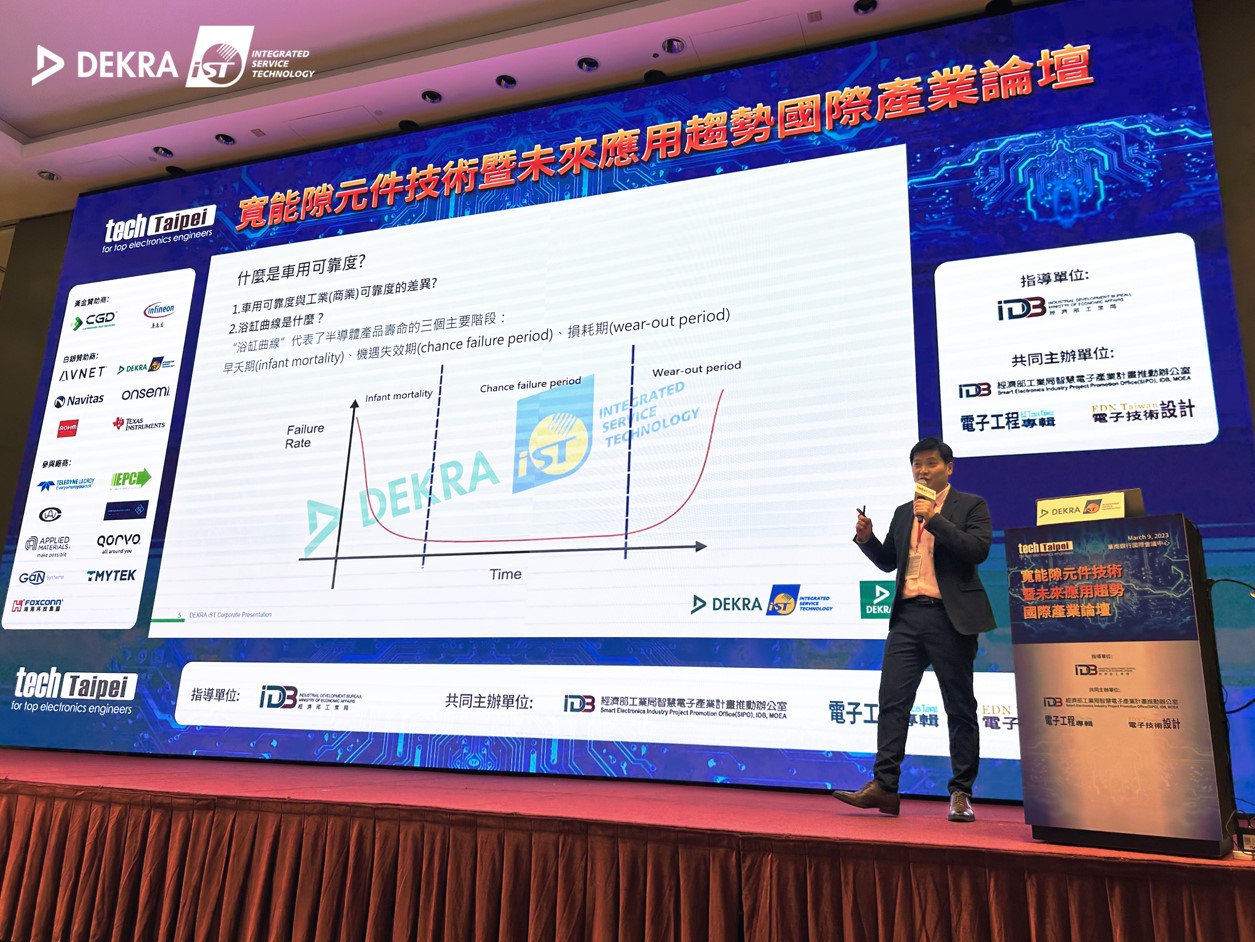
Max Chen, Senior Manager of Component Engineering Department, analyzed the difference of reliability among the automotive, industrial, and commercial industry. Then, he proceeded with the “bathtub curve” to explain the three main life stages of a product. First and foremost, burn-in is the process adopted to detect weak components in the infant mortality period. In the chance failure period, product quality is ensured through operation in a specified timeframe. Lastly, wear-out period, also known as end of life, is particularly vital for automotive electronic parts and components. By testing the product to failure, the design limit of the product can be determined. Furthermore, the company can accurately identify and improve potential issues, creating higher product value.
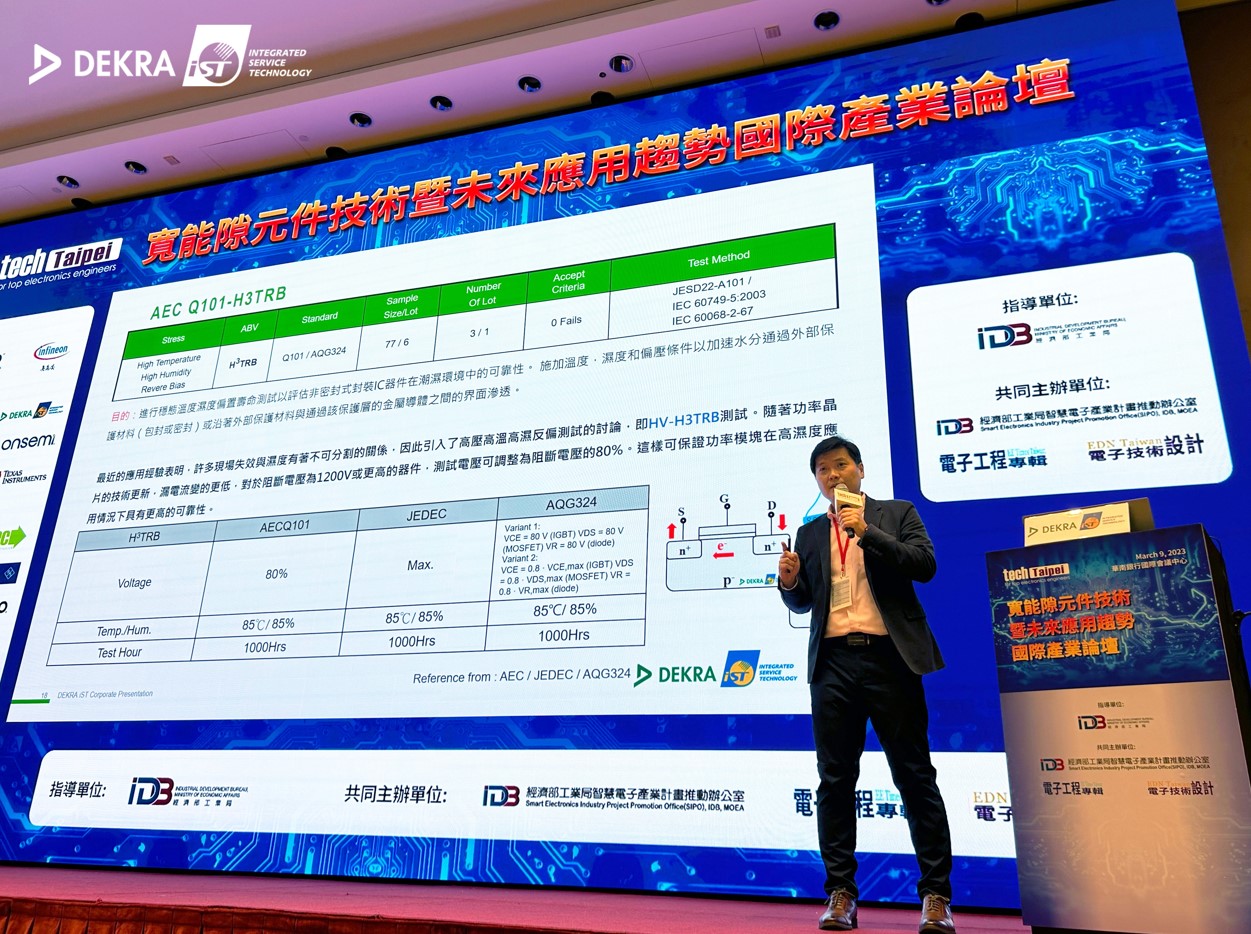
International automotive standards governing WBG power components
There are top two international standards concerning wide bandgap automotive semiconductors. One is AEC-Q101, developed by the Automotive Electronics Council (referred to as AEC). It focuses on stress testing and testing methods for discrete semiconductor devices. The number of samples required is huge, where 1678 samples are needed to complete 29 tests. Another is AQG 324, a validation guideline for automotive power modules published by the European Center for Power Electronics (referred to as ECPE). It covers qualification of power modules for use in power electronics converter units (PCU) in motor vehicles. One may need around 72 to 78 modules to complete the tests.
Three main items of reliability testing on WBG power components
Max Chen further added three main items of reliability testing on automotive high-power components, and shared failure analysis cases as well as concrete solutions to testing and validation. For example,
- Rth (thermal resistance) measurement: The core temperature of chip surface is taken as reference for following tests to reflect the actual product quality.
- IOL/PCT (Intermittent Operating Life) test: Cycling the device on and off replicates the heating and cooling off experienced to simulate end of life conditions.
- SOA (Safe Operating Area) test: The voltage and current conditions over which power semiconductor devices can be expected to operate without self-damage are defined.
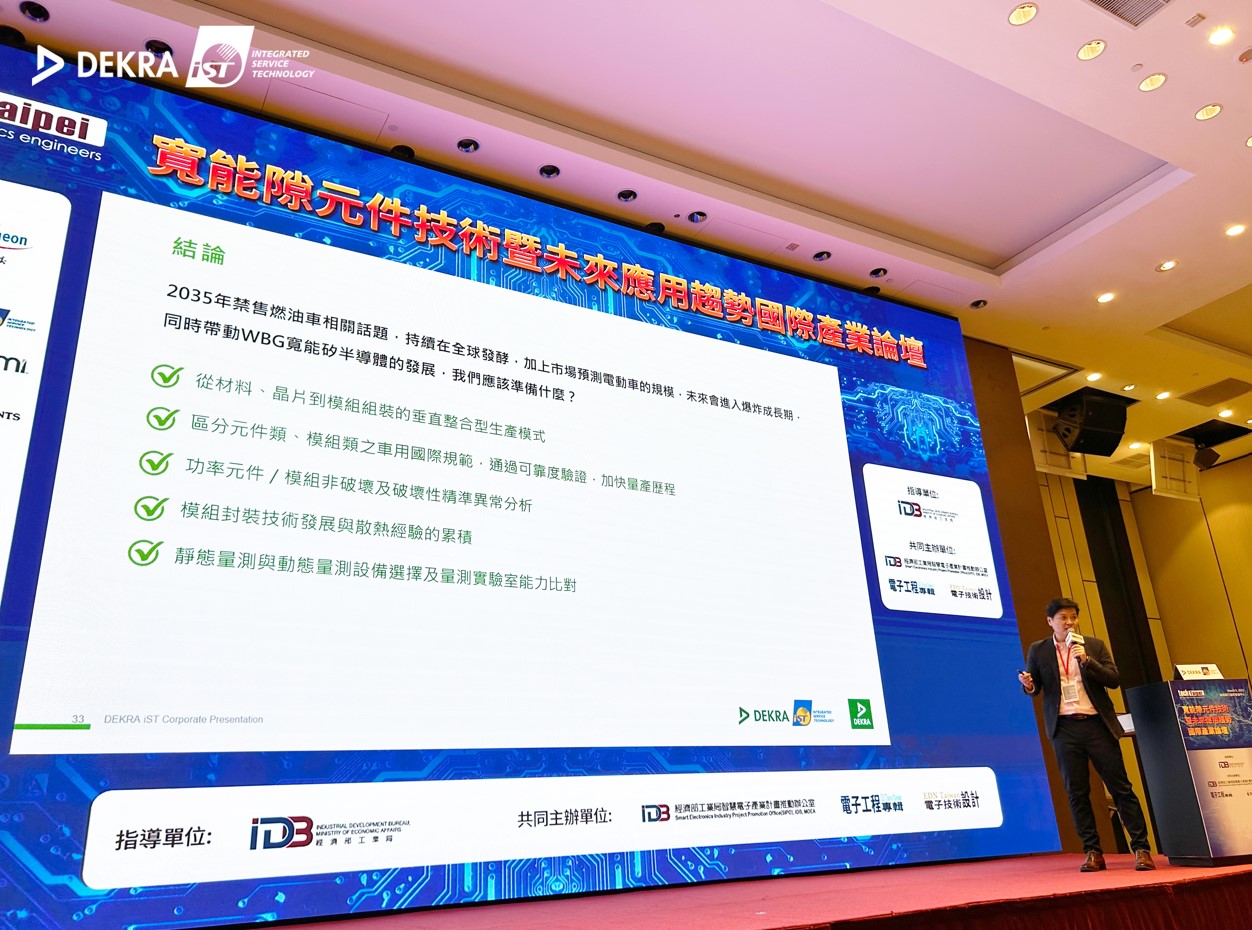
Considering governments over the world have put forth policies to ban the sale of fossil fuels by 2035, the demand for WBG power components in the electric vehicle system is projected to explode and drive the development of the entire wide bandgap semiconductor industry. With such a promising business opportunity ahead, Max Chen summarized the following five key strategies to win the battle:
- Establishing a vertical integrated production mode from materials, chips to module packaging
- Differentiating international automotive standards of components and modules and shortening mass production journey through reliability testing
- Conducting nondestructive and destructive tests on power components/ modules to precisely analyze product defects
- Developing module packaging technology and accumulating dissipation experiences
- Selecting both static and dynamic measurement equipment and comparing lab capacities
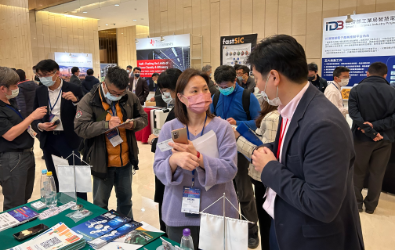
DEKRA iST consultant team provided professional advice in the forum.
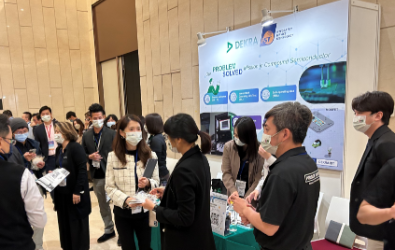
DEKRA iST prepared exclusive gifts for the questionnaire.
DEKRA iST consultant team was also present and provided professional advice on the comprehensive reliability validation services for WBG power components. Clients may enjoy testing solutions to reliability validation and failure analysis specific to wide bandgap components, such as silicon carbide (SiC) and gallium nitride (GaN). In addition, DEKRA iST also offers multi-faceted one-stop validation services, including special high-voltage board design, power component parameter measurement, HTRB, HTGB, H3TRB, TST, and other numerous reliability testing items related to vehicles. We look forward to working with industry leaders to innovate high-quality and highly competitive products, proactively addressing the vast electric vehicle market needs.
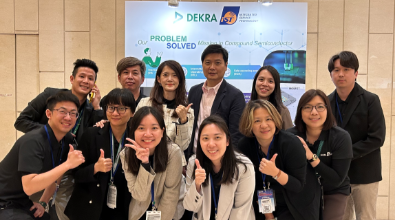
To make all your PROBLEMS SOLVED, we provide professional consultant and service.
For more information or service, please feel free to email to 📧 sos@dekra-ist.com




